-
Patient and Visitor Information
- Access your healthcare information
- Privacy Statement
- Accommodation for Whānau and Family
- At the Hospital
- Going Home
- Non-New Zealand Resident
- Hospital Chaplaincy
- People You May Meet
- Personal Needs
- Visiting Information
- What To Bring
- Your Rights
- Telehealth Appointments
- Telehealth
- Making it easier to keep in touch with patients
- Health Conditions and Treatment
-
Health Resources
- Advance Care Planning
- Alcohol and other drugs
- Aro ki te Hā is a Whānau-led Smokefree Kaupapa for Hapū / Māmā Whānau
- B4School Checks
- Boating Safety
- Bowel Health
- Breast Screening
- Child Health
- Clinical Development
- Dental Health
- Driveway Safety
- Employment Works
- Falls Prevention
- Hepatitis C
- Hand Hygiene
- Hoki ki ngā tūāpapa – Back to Basics
- Influenza and Healthcare Workers
- Immunisation - protecting your whakapapa
- Immunisation Whooping Cough
- Living our Values
- Mana Ake [Mental Health Support for Children]
- Measles
- Meningococcal Disease
- Mental Health
- Northland Health Services Plan
- Renal Health - Recipe Book
- Resource Unit
- Rheumatic Fever
- Safe Sleep and Unexpected Death in Infancy (SUDI) Prevention
- Shared Care - Whānau Tahi
- Sexual Health - Services
- Suicide Resources
- Water Safety
- Whānau Pack
- MyWai
- Sexual Health
-
Healthy Environments
- Alcohol & Liquor Licensing
- Drinking Water Assessment Unit
- Food Safety
- Physical Environments
- Shellfish Safety
- Ship Sanitation and Port Health
- Smokefree Compliance: Environments and Enforcement (Tobacco and Vape)
- Swimming Water Quality
- Early Childhood Education Centres - Health and Safety Assessments
- Solaria (Sunbeds)
- Healthy Lifestyles
- Find a provider
- Organ Donations and Transplants
- Northland DHB Health Needs Assessment
- Community Clinics
- National Public Health Service – Northern Region
When Not to Gather Shellfish
Wild shellfish or kaimoana should not be gathered during or after rainfall when the seawaters are turbid, cloudy or unusually muddy. Water logged soils in the catchment may cause harmful bugs and chemicals to be washed off into the seawater.
Wild shellfish or kaimoana should not be gathered if obvious sources of pollution are known about or seen in the vicinity. This may include effluent from sewage treatment plants, septic tanks, surface water drains, landfill sites, marinas and also large numbers of animals or birds on land or water.

Before you collect shellfish …
Ensure your Kai Moana is safe to eat.
Some areas might look safe at first but may not be safe for collecting shellfish.
The water could be contaminated by:
- sewage and domestic waste
- engine fuel, paints and chemicals
- agricultural waste and run-off.
Avoid collecting shellfish from areas where there are signs warning of contaminated shellfish. Click here to view areas which have warning signs.
Look out for the following risk indicators:
- recent heavy rain causing farm run-off
- houses close to the beach
- rivers and streams that may be polluted by animal faeces or industrial waste
- stock or signs of stock near the gathering area
- drains discharging onto the beach.
Always:
- collect from clean safe areas
- check with locals if in doubt
- take your kai moana straight home and refrigerate.
Health Risks
Eating shellfish taken from contaminated areas could cause:
- a fever
- a tummy bug
- diarrhoea
- vomiting.
Algal bloom contamination could also cause serious breathing difficulties, loss of muscle control, loss of memory, nausea, vomiting and death.
Last modified:
-
Patient and Visitor Information
- Access your healthcare information
- Privacy Statement
- Accommodation for Whānau and Family
- At the Hospital
- Going Home
- Non-New Zealand Resident
- Hospital Chaplaincy
- People You May Meet
- Personal Needs
- Visiting Information
- What To Bring
- Your Rights
- Telehealth Appointments
- Telehealth
- Making it easier to keep in touch with patients
- Health Conditions and Treatment
-
Health Resources
- Advance Care Planning
- Alcohol and other drugs
- Aro ki te Hā is a Whānau-led Smokefree Kaupapa for Hapū / Māmā Whānau
- B4School Checks
- Boating Safety
- Bowel Health
- Breast Screening
- Child Health
- Clinical Development
- Dental Health
- Driveway Safety
- Employment Works
- Falls Prevention
- Hepatitis C
- Hand Hygiene
- Hoki ki ngā tūāpapa – Back to Basics
- Influenza and Healthcare Workers
- Immunisation - protecting your whakapapa
- Immunisation Whooping Cough
- Living our Values
- Mana Ake [Mental Health Support for Children]
- Measles
- Meningococcal Disease
- Mental Health
- Northland Health Services Plan
- Renal Health - Recipe Book
- Resource Unit
- Rheumatic Fever
- Safe Sleep and Unexpected Death in Infancy (SUDI) Prevention
- Shared Care - Whānau Tahi
- Sexual Health - Services
- Suicide Resources
- Water Safety
- Whānau Pack
- MyWai
- Sexual Health
-
Healthy Environments
- Alcohol & Liquor Licensing
- Drinking Water Assessment Unit
- Food Safety
- Physical Environments
- Shellfish Safety
- Ship Sanitation and Port Health
- Smokefree Compliance: Environments and Enforcement (Tobacco and Vape)
- Swimming Water Quality
- Early Childhood Education Centres - Health and Safety Assessments
- Solaria (Sunbeds)
- Healthy Lifestyles
- Find a provider
- Organ Donations and Transplants
- Northland DHB Health Needs Assessment
- Community Clinics
- National Public Health Service – Northern Region
